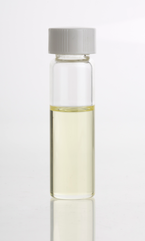| Plant oils |
|---|
 |
| Types |
| Uses |
| Components |
An essential oil is a concentrated hydrophobic liquid containing volatile (easily evaporated at normal temperatures) chemical compounds from plants. Essential oils are also known as volatile oils, ethereal oils, aetheroleum, or simply as the oil of the plant from which they were extracted, such as oil of clove. An essential oil is essential in the sense that it contains the essence of the plant's fragrance—the characteristic fragrance of the plant from which it is derived.[1] The term "essential" used here does not mean indispensable or usable by the human body, as with the terms essential amino acid or essential fatty acid, which are so called because they are nutritionally required by a living organism.[2]
Essential oils are generally extracted by distillation, often by using steam. Other processes include expression, solvent extraction, sfumatura, absolute oil extraction, resin tapping, wax embedding, and cold pressing. They are used in perfumes, cosmetics, soaps, air fresheners and other products, for flavoring food and drink, and for adding scents to incense and household cleaning products.
Essential oils are often used for aromatherapy, a form of alternative medicine in which healing effects are ascribed to aromatic compounds. Aromatherapy may be useful to induce relaxation, but there is not sufficient evidence that it can effectively treat any condition.[3] Improper use of essential oils may cause harm including allergic reactions, inflammation and skin irritation. Children may be particularly susceptible to the toxic effects of improper use.[4][5] Essential oils can be poisonous if ingested or absorbed through the skin.[5]
- ^ "essential oil". Oxford English Dictionary (online, American English ed.). Archived from the original on 2014-08-09. Retrieved 2014-07-21.
- ^ Reeds PJ (2000). "Dispensable and indispensable amino acids for humans". The Journal of Nutrition. 130 (7): 1835S–40S. doi:10.1093/jn/130.7.1835S. PMID 10867060.
- ^ Lee MS, Choi JC (2012). "Aromatherapy for health care: an overview of systematic reviews". Maturitas. 3 (71): 257–260. doi:10.1016/j.maturitas.2011.12.018. PMID 22285469.
- ^ Posadzki P, Alotaibi A, Ernst E (2012). "Adverse effects of aromatherapy: A systematic review of case reports and case series". The International Journal of Risk & Safety in Medicine. 24 (3): 147–61. doi:10.3233/JRS-2012-0568. PMID 22936057.
- ^ a b "Essential oils: Poisonous when misused". US National Capital Poison Center. Retrieved 2017-12-01.